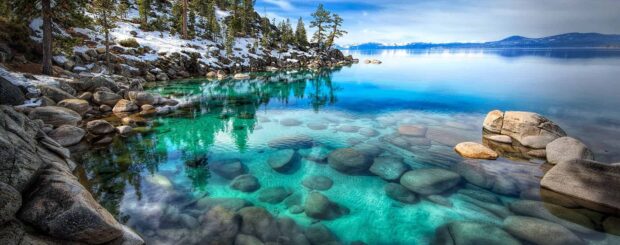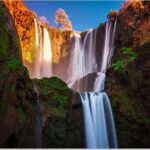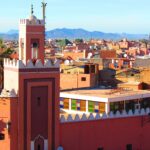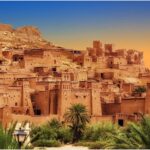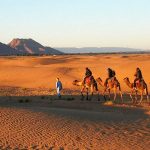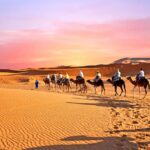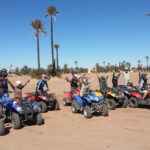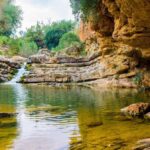Top 10 Travel Photography Tips
Every holiday is an opportunity. Every day you have a chance to discover something new, even if it is found in the next chapter of that long-overdue read. But it’s out and about; immersed in the sights and sounds of somewhere you’ve never visited where the true discoveries are waiting to be found. Travel Photography is about the moment. Even though it’s a fleeting moment, with a half-decent digital camera and a few tips and tricks, you can return with a lot more than just burned-out sunsets and badly cropped coasts.
For Best Practice Travel Photography Look for the unique
“This picture’s of the mountain pass we trekked through and then there are the kitesurfing lessons on the beach in Egypt.” Blah, blah, blah…. You may have a great camera and some skills, but before you release the shutter ask yourself, “How is this mountain pass different? What makes this an Egyptian beach?” If you can’t answer these questions, your photographs will be generic and sadly, forgettable.
Look for the unique; your images should tell a story. A picture of your partner boarding a train is just a picture, but if you’ve included the DB symbol in the frame you have a photograph of traveling in Germany (DB Bahn: the German federal railway). It’s simple, but that’s where travel photography begins…
Use the magical ‘rule of thirds’
Spotted a sweet, whitewashed Spanish villa sat alone on an Andalucian hillside? Think it will make a great photograph? Then don’t put the subject in the middle of the picture!
There’s a photographic guide known as the rule of thirds: look it up! Briefly, when looking through the viewfinder or at the screen, divide the frame into thirds by drawing two imaginary lines down, and two across, each the same distance apart. Now position your subject where the lines cross. Your pictures just got a whole lot better!
Instead of a villa with rocks on either side, you’ve got the building in the top right corner, and off to the left a slope falling away to a distant rocky shore: now that’s more interesting.

Change your position
How many posed pics have you seen that were taken from the same position? If you use the landscape format (sideways) every image taken from standing, of people standing, comes out the same: chopped off at the waist; half sky, half beach, and not much else.
So kneel down; stand on something and shoot down; get in close, change your viewpoint, and with it, the position of your subject and your images will change forever.
Know your tech
Learn your menus. You’ll find really useful settings. Shoot the biggest file size possible -you can always make them smaller later; shoot RAW files if your camera supports them and you have a big memory card; learn about ‘White Balance’ (how the sensor reacts to different types of light – you can play with these easily); take your battery out if you are not using the camera for a while – it will degrade otherwise; play with fill-in flash – it gives a little light to faces without blitzing them.
When you first focus the camera by holding the shutter half down, you get a beep. This is also common when the camera sorts out the exposure. To avoid getting pictures with bright white patches (burnt out) try and aim your beep at the brightest spot, this way the camera captures everything that is darker.
Your pictures might come back dark, but you can get them brighter; if they are burnt out you have lost parts of the picture (clouds with no detail, does not a good travel photo make).
Get the right camera
Buy the biggest, most expensive, flashiest stop! Don’t be suckered into getting something you’ll never use. More money does buy a better kit, but if you want good holiday pictures a reliable point-and-shoot camera can still deliver. In a budget camera look for build quality, decent megapixel count (8MP + is sufficient for A4 size prints), and usability.
Moving up, you want to find better quality lenses, upgraded sensors, and manual functions (these let you get more creative). But avoid gimmicks! Face detection, smile detection, tanga brief detection all fill up your menu; they don’t help take better travel photography images.
Perhaps the best choice is the so-called ‘bridge’ cameras. These sit between the quality happy snappy and the full-fat SLR (Single Lens Reflex). This way you’re getting close to semi-professional functions, great build quality, and all in a compact body.
There are also ruggedized travel compacts, which are waterproof and shockproof – great for snowboarding and scuba diving holidays.
Thinking of getting an SLR? Then avoid the cheaper models. For just a little more money you’re getting magnesium alloy instead of plastic, and you’re into professional territory.

Get inspired
Look around before you leave. Scour the web and bookmark your favorite photography sites and take a look at the images that helped sell you the holiday – imitation is the sincerest form of flattery after all.
There are lots of ways to take a travel photograph. Think: Are you looking for pictures that look like postcards? Or are you trying to reveal something, a culture or a history perhaps?
Check out Lonely Planet, National Geographic, and even individual photographers: There’s Dan Cheung’s pictures, Julia Horbaschk’s photoblog, and Sebastian Salgado’s current project ‘Genesis’ – he’s photographing everything, so I’m sure you’ll find something!
A new development is Sound Slides: A program that allows you to edit-in sound and text to your images, creating an interactive slideshow.
Get creative For your Travel Photography
Top Ten Travel Photography Tips are all very well, but ultimately it’s down to you! Tips can help, but you should experiment and follow your eye. Shoot from the hip; hold your camera above your head and photograph into the crowd; get under the snowboard ramp; move the camera at the same speed as a passing tuk-tuk; shoot from the floor under the Eiffel tower; stitch together a panoramic, or attempt a Hockney Joiner (hundreds of overlapping images).
In other words, learn how to use the settings on your camera, then mess with them! Why not try long exposure settings with flash, or try a few nightscapes? You decide the results, not the camera.
Get out there!
Don’t wait for the holiday. If you do, you will spend half your time faffing with your camera when you could have got used to it at home. There are images everywhere. Tourist images of your local area can be inspiring, so practice before you leave and you’ll be better prepared.
After a couple of days by the pool in Greece, get off your backside and get out of the hotel. Take a bus out of town, find where the locals go to relax – I guarantee it’s more authentic – and get photographing. If you want to tell the story of your travels you need contextual images: signs, symbols, menus, oddities, transport, etc. Mix these with vistas and passing moments, and the tale is told.
But be patient…
Thrashing 150 images through your memory card and jumping back on the bus is rarely going to give you good results. You have to be there first, but just because you are there don’t expect the world to revolve around you. Likewise, sticking your camera under the nose of every man, woman, child, and donkey is not great either.
Settle in a spot, look for the shabby roadside bar the locals drink in, and keep the camera stashed. It’s important to establish some communication with people before you photograph them. Everyone has their own way: you can speak to them directly or smile, raise your camera, and put it back down, whichever, just don’t be secretive or sly. Furthermore, if there are children in the frame, it’s often best not to shoot at all. For people shots, look for gestures and expressions as they show character and can tell their own story…
Get your Travel Photography pictures published
Yes! You’ve got some great pictures, so why not get them published? There’s always a competition you can enter, so keep your eyes peeled, and there’s plenty of social networking spaces you can use to get critical feedback.
And if you think you’ve established a good standard, apply to a picture agency and get your images up for sale. Just beware: If people are identifiable in your image you must have their permission (model release) and read the small print of the popular online spaces. Also, you can protect your images by adding metadata and Copywrite information – strongly recommended.
And if you’re happy just sharing your travel pictures with friends, good for you. Photography is a very personal skill: Load your photos as a slideshow and sit back and enjoy, because now you’ve got some great pictures, well done!

